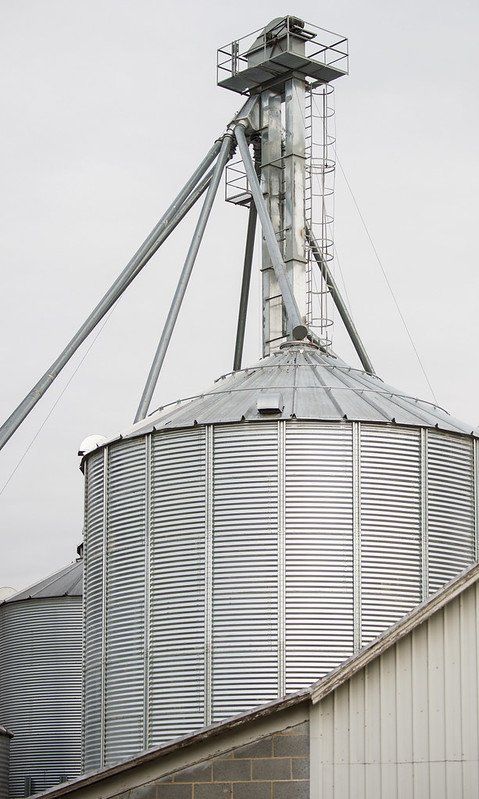Holding Corn and Working Towards Better Markets

Farmer Matt Raben shared a weary smile during his less-than-ideal update to the IL Corn Marketing Board (ICMB) of directors. On his farm corn sits in grain bins, waiting to go to market. In a typical year the Raben family’s crop would have all been sold months ago.
Corn storage nears record highs as farmers keep grain on farm instead of selling for prices below the cost of production. In Illinois, on-farm corn stocks hit a record of 445 million bushels or 20% of the crop produced last year. The last time stocks exceeded 20% of production was in 1988, when farmers were holding 29% of their crop.
“It’s depressing and disheartening to be in the environment we are in,” Raben, who farms in White and Gallatin counties, said. “We put a lot of work and money into what we grow. When the reward isn’t there, it weighs on you.”
In Raben’s ICMB district in southeastern Illinois, some farmers have up to 50% of their previous year’s production in storage. IL Corn Growers Association (ICGA) members throughout Illinois affirm the issue is widespread.
IL Corn Director of Exports and Logistics Collin Watters said although a combination of scenarios created the current climate, the problem lies in supply and demand. Raben said corn prices in Illinois will move if the Chicago Board of Trade’s basis moves up. However, he said demand drives the pendulum.
“Exports have got to be better,” Raben said. “We have got to find the market for it.”
In addition to years of above average corn production in the United States, timely rain, a large crop from South America and the strength of the dollar created the ag economic downturn. “We have a demand problem,” Watters said. “Farmers around the world have driven supplies to burdensome levels and we need demand in all sectors to kept up with it.”
A Solution Driven Future
Amidst the price drop, IL Corn has placed all its cards on the table to increase markets. From trade, infrastructure and research, Watters said the organizations are working on all fronts for Illinois farmers.
Politically, the IL Corn Growers Association (ICGA) supports funding for the Market Access Program (MAP) and Foreign Market Development (FMD) program in the farm bill. MAP and FMD develop export markets overseas and funds have not increased since 2006. The programs return over $23 to U.S markets for every $1 invested.
For over 40 years, IL Corn has championed improvements to the state’s lock and dam systems. Illinois is covered in nearly 1200 miles of waterways and exports nearly 50% of its corn out of state. Watters said the organization is proud to support recent upgrades to Lock and Dam 25 and advocates for advancements throughout the state.
High input costs drive margins on Illinois family farms razor thin. NCGA's Krista Swanson reported, "From 2022 to 2024 forecasts, the cost to produce corn drops 5.4% while the market year average price drops 32.7%.” The changes in price and inputs would cause margins to swing from $1.19 profit to $0.45 loss per bushel.” ICGA is working to drive competition to create a marketplace where corn prices are above production costs.
One third of U.S. corn is used in ethanol production. The Next Generation Fuels Act is one of ICGA’s top priorities and supports the preservation of the internal combustion engine. IL Corn strives to maintain the biofuels market and drive ethanol demand. As the ethanol policy debate continues, the Illinois corn checkoff invests in infrastructure powering higher blends of ethanol made available upon the bill’s passage.
In February, IL Corn and other state corn organizations supported the Radicle Growth program. “The Radical Corn Value Chain Challenge sponsored by U.S. Corn Farmers” invests in companies creating long-term demand products for corn. Watters said IL Corn is working on all fronts to bridge the gap and create new opportunities for corn demand. Raben encouraged farmers to see the value in programs like the IL Corn Marketing Board for growth in new markets.
“All we can do is keep marketing ourselves,” Raben said. “We personally can’t make a deal with other countries. But, if we keep marketing ourselves, when the opportunity comes, we can be ready to particapte in the demand."











































































































